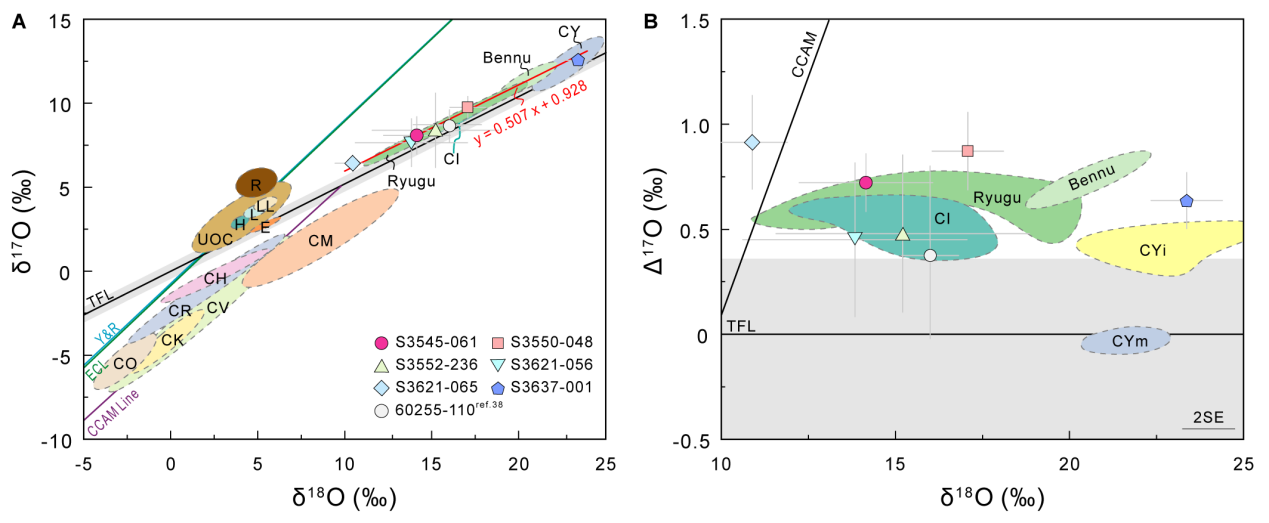Meteorites, known as messengers of the Solar System, are critical objects for studying the formation and evolution of planets. However, most meteorites cannot be preserved on Earth due to atmospheric filtration and erosion from active geological processes. This situation is even more severe for fragile Carbonaceous Ivuna-type (CI) chondrites, which account for less than 1% of Earth's meteorite collection. In contrast, the Moon serves as a "natural archive" for meteorites, benefiting from its barely-there atmosphere and almost inactive geological processes.
Recently, a research team led by Prof. XU Yigang and Prof. LIN Mang from the Guangzhou Institute of Geochemistry of the Chinese Academy of Sciences identified seven olivine-bearing clasts from two grams of lunar regolith returned by the Chang'e-6 mission. Their findings were published in Proceedings of the National Academy of Sciences (PNAS) on Oct. 20.
Further analysis of the trace-element and oxygen-isotope compositions of the olivine clasts confirmed that they are relics of CI-like chondrites. The researchers noted that these relics formed through the rapid-cooling-induced crystallization of melt droplets, which were generated when CI chondrites melted upon hitting the lunar surface. This study also established an integrated method for identifying meteoritic materials in extraterrestrial samples.
The parent bodies of CI chondrites were originally formed in the outer Solar System, and some of them migrated into the inner Solar System during the formation of planets. This discovery confirms that this kind of material have finally migrated into the Earth-Moon System. A preliminary statistical analysis of meteoritic materials on the Moon shows that the proportion of CI chondrites on the Moon is significantly higher than in Earth's meteorite collection-indicating that the contribution of CI chondrites to the Earth-Moon system has been severely underestimated.
Furthermore, CI chondrites are rich in water and organic materials, so this discovery also has important implications for understanding the origin of water on the lunar surface. Additionally, the researchers suggested that the previously detected water with a positive δ18O and Δ17O signatures in lunar samples was likely the result of the impact of such meteorites.
This study not only reshapes our understanding of how materials migrate through the Solar System but also provides new directions for future research on the origin and distribution of lunar water resources.

Relics of the impactor identified in the Chang'e-6 lunar regolith. (Image by Prof. XU Yigang's team)

Comparison of oxygen isotope compositions of olivine in impactor relics with other meteorite end members. (Image by Prof. XU Yigang's team)






